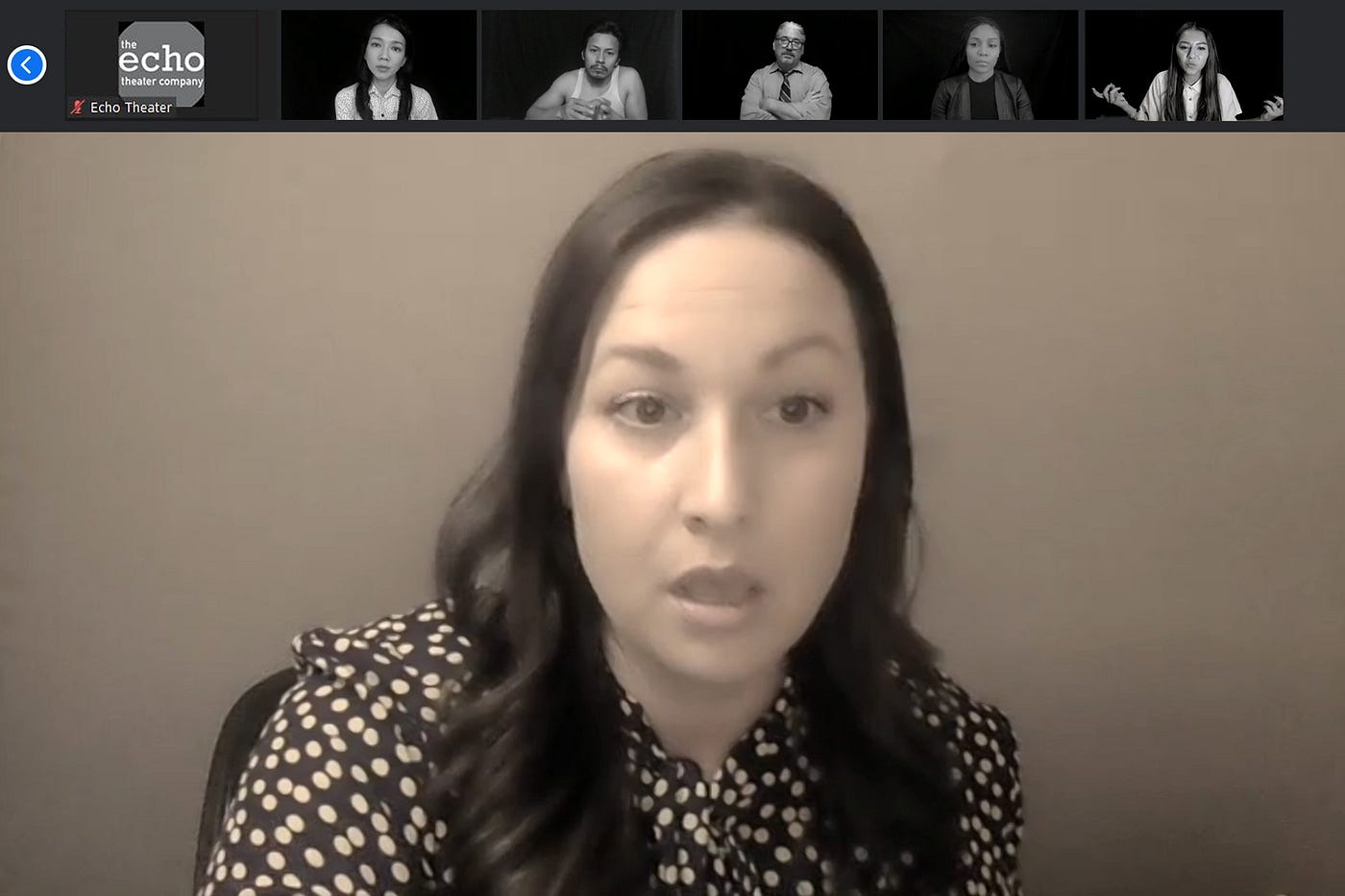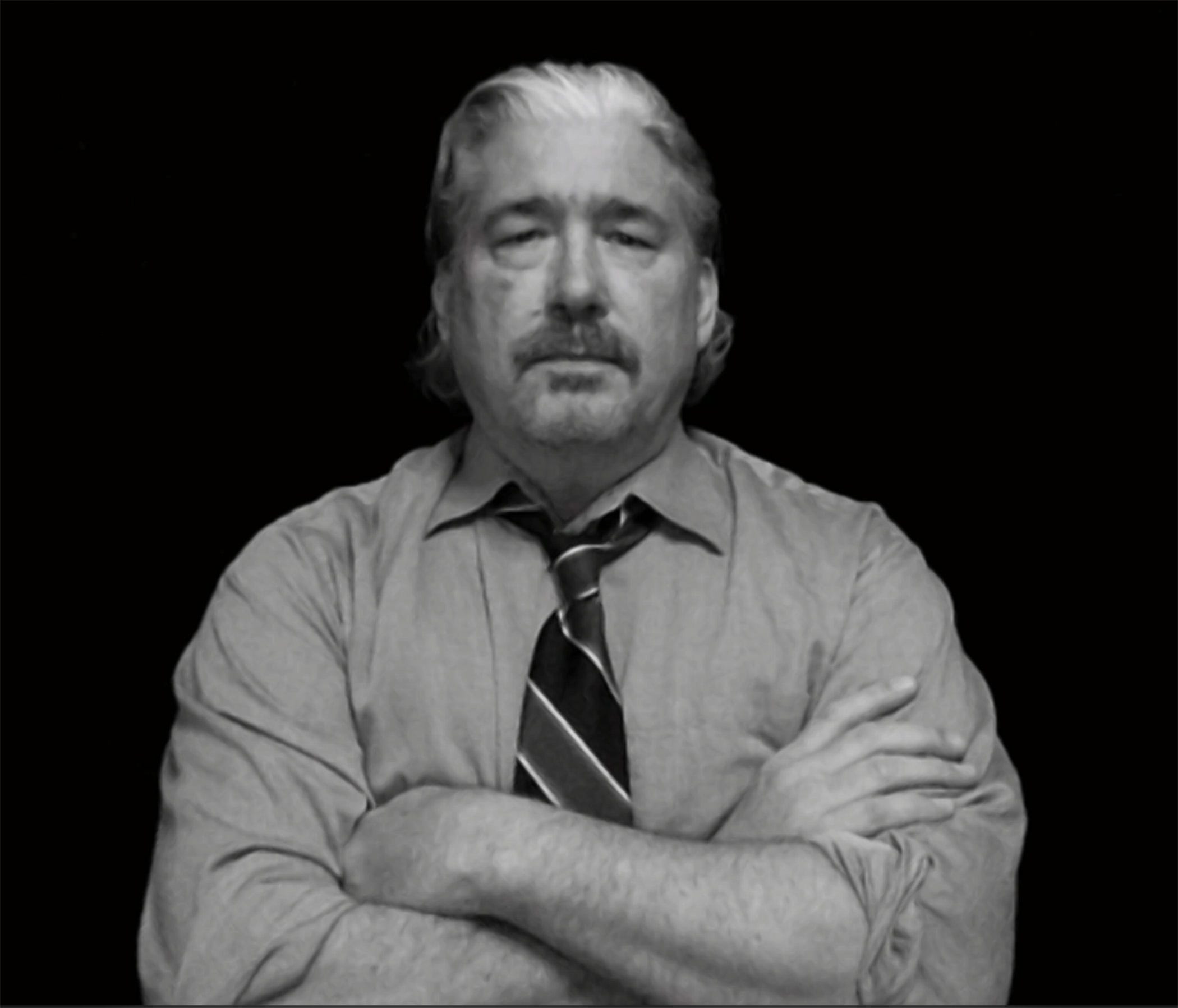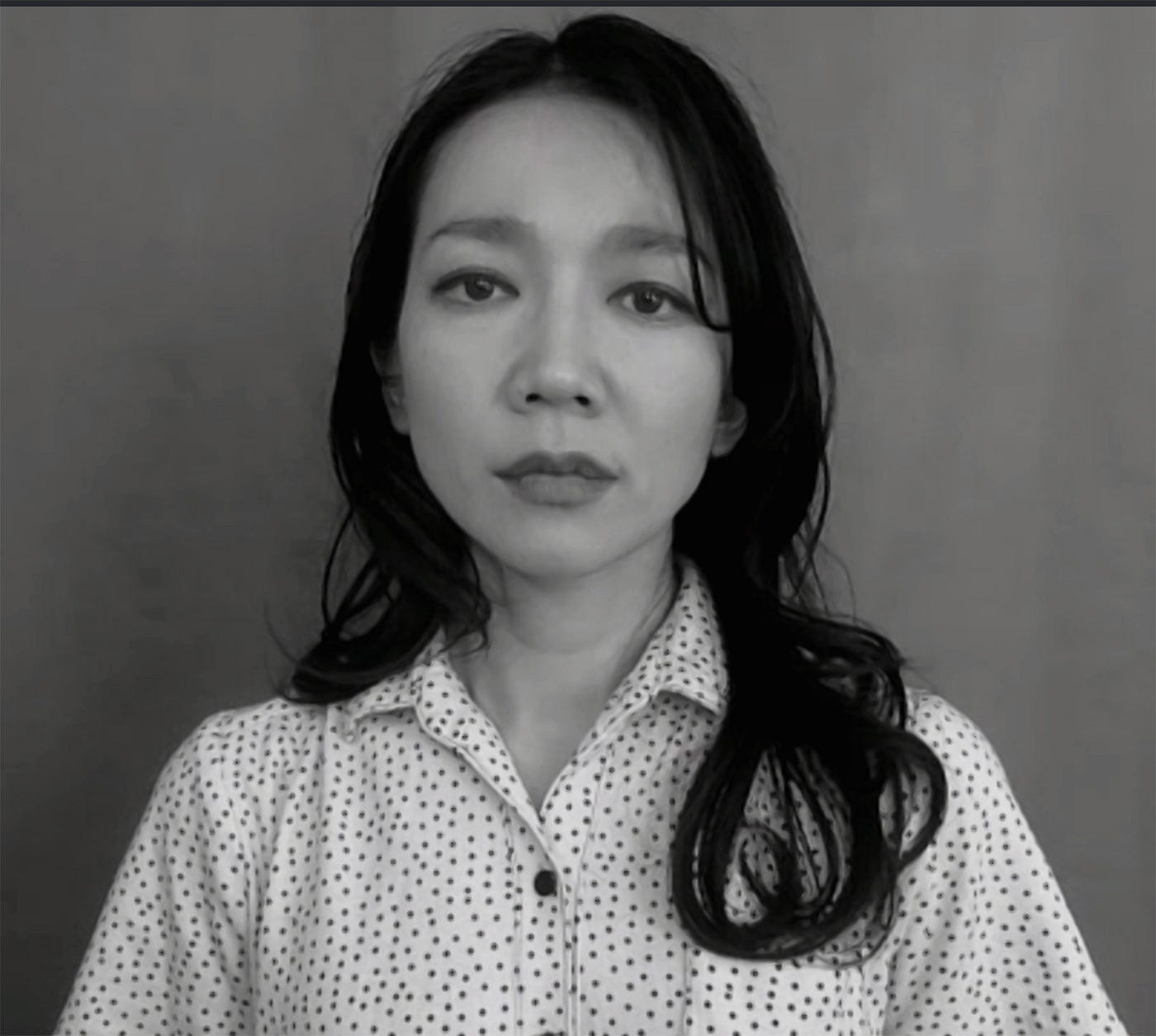Unsolved Mysteries ‘Underneath The Freeways of Los Angeles’ (The NoPro Review)
Does The Echo Theater Company’s ambitious new play earn a unanimous verdict?


Let’s cut to the chase: Underneath The Freeways of Los Angeles is a fairly damn good play that probably shouldn’t be framed as an interactive murder mystery.
The how’s and why’s of this break fairly cleanly into a spoiler-free “what works” and a “what works against it” section, followed by a few spoilers. So we’ll put aside our usual freeflow style to tackle this ambitious piece from The Echo Theatre Company, writer Matthew Paul Olmos, and director Michael Alvarez.
WHAT WORKS
UTFOLA revolves around the discovery of two unidentified bodies in the lake at Hollenbeck Park under the literal shadow of the newly opened Interstate 5 in 1960. The new freeway has split the community of Boyle Heights — at the time a richly diverse district of LA that was home to Black, Jewish, Latino, and Japanese communities — displacing some and leaving the rest with the concrete scar stitched between their homes.
The story is unveiled in pieces, first through a monologue from Elie Kovner (Amy K. Harmon), a lifelong Jewish resident of the neighborhood who is concerned that the infamously prejudiced LAPD isn’t going to get to the truth of the matter. She’s the first person from production we meet after hanging out in Zoom with our fellow patrons. (More on that below.) Ellie brings us up to speed and then sets us subsets of the audience off to interrogate the persons of interest that the LAPD have detained. Material witnesses and suspects alike.
What follows is a round robin of interviews, each nine minutes long with little reset time in between, wherein each of the performers partially monologues, partially improvs through the q&a with the audience. These interviews reveal more about the world of Boyle Heights in 1960, suggesting that the scar of the freeway and the brutality of the crime — a pair of young lovers, a young Mexican woman , the other a young white man felled by blunt force trauma to the head — are a kind of founding myth of contemporary Los Angeles. A shattered metropolis built on fresh wounds continuously reopened.
Each performer is presented to us in a kind of void, filtered through black and white in a way that lets the audience easily distinguish between who is a character and who is there to play detective. The effect is subtle, smart, and striking in a way that shows director Alvarez has leaned into the limitations of the pandemic era tools from a pure production standpoint.
The actors too are game, each performance as solid as the next, with characters that are drawn in such a ways to deliberately provoke reactions from the audience. Lucretia “Lu” Jacobs (Morgan Danielle Day), the black activist who was organizing against the freeway mixed it up with one older white man in my group in a way that felt like a tearing away at the cultural Band-Aids which hide the rawness underlying LA’s decades of unresolved racial tension. Meanwhile James Rouser (Darrett Sanders) of the State of California’s Division of Highways project channeled little mannerisms of Donald Trump without going into a full bore impression. (Which got the same older white man to to sigh in exasperation, although I couldn’t tell if it was with offense at the performance or just having to endure even the slightest Trumpian ticks.)
All of which ads up to a fairly stellar piece of agitprop, grounded in the all too real neo-noir heart of LA and powered by scripting, performing, and direction.
The problem is that it sucks as an interactive murder mystery. Perhaps deliberately so, in an attempt to subvert the mystery genre. But by casting the audience in the role of citizen detectives, Olmos and Alvarez open up a Pandora’s Box that can only be dissected by touching on some of the secrets.
We’ll start with can be broken down without giving away the ballgame.

WHAT WORKS AGAINST IT (SPOILER-FREE)
The first thing is that while the audience is cast as citizen detectives they aren’t really given a role. We’re told that we can make up who we want to be, but while that seems generous, what it really does is hamper the actors when it comes to how they react to us. Who the audience is is directly related to what the audience means to the characters, and leaving that undefined gives none of us — audience and actor alike — guidance on how to play a given scene. Even if it is to reject the given offer and go off in a different direction.
Get Noah J Nelson’s stories in your inbox
Join Medium for free to get updates from this writer.
SubscribeSubscribe
The breakneck pace of the transitions from scene to scene give the citizen detectives no time to strategize or even just figure out how they will relate to each other as people. And while that can become part of the point as aggressive Boomers assert their dominance over everyone else in a group — which just kept happening — it’s also the kind of frustrating that stops feeling intentional and just starts feeling broken. And honestly, once you’re wondering if the frame is broken or if it’s supposed to be this way, the focus starts to be on the flaws and not on the merits of the production.
Both of these factors set up the bigger problems with the interactive side of things.


WHAT WORKS AGAINST IT (SPOILERS)
Any mystery will have a red herring or two, but the trick to making them satisfying as a story is to have those red herrings at least resolve in a way that is internally consistent. Why was the bartender seen on video wandering the alley after dark? Because he’d lost his keys, not because he was stalking the bar owner who was found dead in a dumpster the next morning. Everything in its right place.
Putting everything in its right place doesn’t seem to be the aim of Olmos and Alvarez, and from a thematic standpoint I respect that. After all systemic racism only “makes sense” if you accept some pretty horrid things as just given factors. We can trace the pathway by which we wound up with freeways slicing neighborhoods apart, massive income inequality, and thousands of low wage laborers forgoing their right to organize because they’re worried that they won’t be able to actually stand up to the most powerful corporations to ever exist. Effects follow causes, but it doesn’t make sense.
To touch on that idea of things not making sense Olmos’ script steps out of the bounds of the logical at the end and moves towards something more poetic, even if that poetic/mythic is still manifested through one of the characters. Yet this whole dimension to the story just drops in out of nowhere. There’s little in the way of set-up for something that takes us into an emotional neighborhood where David Lynch might be happy to make a home, and all of it kind of has a bit of a “Psych! We tricked you!” vibe.
There’s a big difference between withholding key pieces of evidence in order to heighten dramatic tension and creating narrative dead ends to distract from a pending genre-shift. While it’s not impossible to execute such a move in a non-interactive neo-noir, in a piece that is framed as an interactive murder mystery it winds up leaving one wondering why both to “play” the play at all. Which means that right when one should probably be thinking about the spiritual sickness at the heart of LA’s dis-community, one is left somewhat exasperated that you were invited to a snipe hunt.
Which wouldn’t even be so bad, if it weren’t for the fact that the red herrings given to the cast to riff off of are so thin that they too have no where to take things. A final round of questioning with all the actors present finds them vamping on increasingly thin ice, in a way that moves past “discomfort for the characters” to “discomfort for the actors.” Not because they’re not good, but because they’ve got seemingly little to work with to explain the plot contrivances that bring them into the orbit of the story.

THE VERDICT (SPOILER FREE)
For all my frustration with the framing of the show as an interactive mystery, the rest of it works well together. If anything UTFOLA feels like it would be well suited to a site-specific production in post-Covid times. One that either jettisoned the notion that the audience was solving the crime, or that tightened up on the mystery bits so that the moves which subvert the genre felt more intentional and less like no one tested things out to see if parts were broken.
For now, students of the interactive form would do well to check out UTFOLA for themselves, because even when the mechanics of the production fall short, what is being reached for makes it worth the while.
Underneath The Freeways of Los Angeles runs online, via Zoom, through April 26th. Tickets are $15-$25.
Discover the latest immersive events, festivals, workshops, and more at our new site EVERYTHING IMMERSIVE, new home of NoPro’s show listings.
NoPro is a labor of love made possible by our generous Patreon backers. Join them today!
In addition to the No Proscenium web site, our podcast, and our newsletters, you can find NoPro on Twitter, Facebook, YouTube, Instagram, in the Facebook community Everything Immersive, and on our Discord.